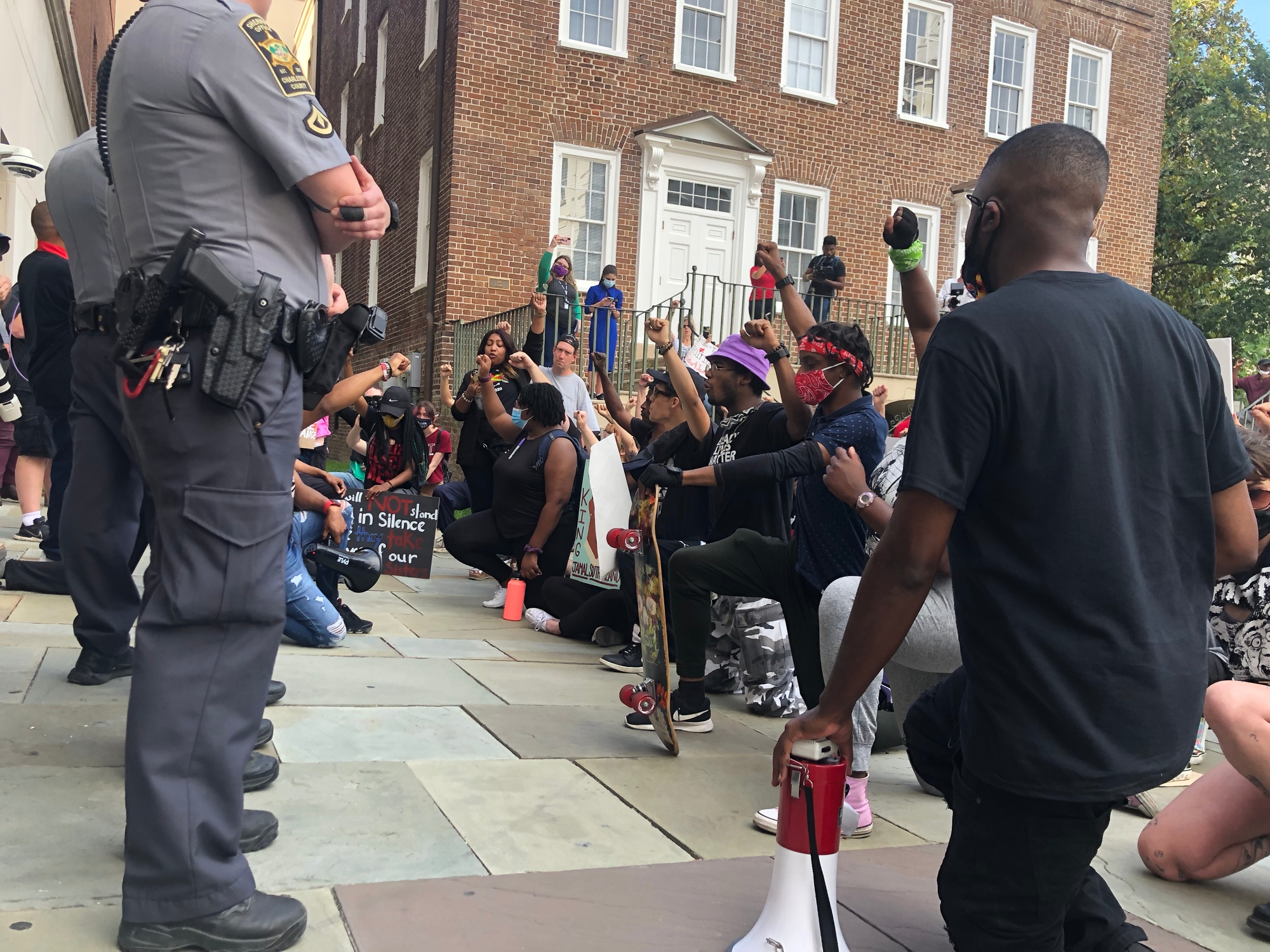
Activists kneeled this week before departing the Charleston County Courthouse during a protest stemming from the in-custody death of Jamal Sutherland. Charleston City Paper photo by Sam Spence.
By Andy Brack, editor and publisher | The white majority in the S.C. General Assembly needs to listen to Black colleagues on this: It’s critical for them to work together to make sweeping institutional reforms in jails, prisons and among rank-and-file law enforcement authorities.
 Needless deaths, pain and suffering must stop.
Needless deaths, pain and suffering must stop.
In April 2015, a North Charleston police officer shot Walter Scott, a 50-year-old Black man, in the back after stopping him for having a non-functioning vehicle brake light. The officer went to prison. Legislators passed a law mandating that police wear body cameras. But a newspaper study in 2020 showed the law hasn’t lived up to its expectations due to funding, which is something the General Assembly controls.
In June 2015, a white supremacist shot and killed nine Black worshippers at Emanuel AME Church in Charleston, including state Sen. Clementa Pinckney, a colleague. The shootings gob-smacked the nation. A president sang “Amazing Grace” at Pinckney’s funeral. Yet, six years have passed and nothing has happened to close the loophole that allowed the terrorist, now in prison, to buy the gun used in the slayings.
Then in January, jail officials in Charleston electro-shocked 31-year-old Jamal Sutherland six to eight times with tasers and fired two rounds of pepper spray to try to get him out of a cell to attend a bond hearing. In essence, the prisoner with mental health issues was electrocuted. Officers used extreme violence instead of the simple alternative of rescheduling the hearing.
Nothing good can come from continuing to do nothing to reform a system that allows these kinds of tragedies to happen in the Palmetto State. Continued failure to do nothing will only provide opportunities for the system to continue to fail and more people to die.
Lawmakers must find ways when returning for special sessions this year to get serious and make our state safer, particularly for Black men in the sights of law enforcement authorities. Some ideas:
More training. Did Sutherland really need to be tased up to eight times? Do officers know what each zap does to a body? Better training for authorities surely could have helped in this instance — and scores of others we don’t know about.
More treatment funding. The state needs to plow significant funding to pay for mental health treatment that intervenes before people get into the jail pipeline. It needs more crisis counselors and ways for people to seek help before problems get out of control. Lawmakers should overhaul the crisis safety net. To be clear: This is not a call to “defund the police” and retarget existing resources, but a plea to add more money to pay for better mental health education for the public and law enforcement officers, extra mental health evaluations, more mental health treatment alternatives and infrastructure money for a system that has been crumbling for years. Purchasing more law enforcement toys isn’t going to rectify mental health treatment systems that have been crumbling for decades.
Use the right tools. Are tasers and pepper spray and restraints and guns needed all of the time in all situations? Perhaps authorities need to consider limiting tools of violence based on situational appropriateness. Otherwise, as House Minority Leader Todd Rutherford told The Post and Courier, “When you’re a hammer, everything’s a nail.” The General Assembly can provide guidance and limit overzealous uses of force.
Situations involving confrontation in our society are difficult. Law enforcement authorities have a difficult job and generally do it well. But better training in how to use the right tools, upgrades for the whole mental health safety net, more funding and other institutional reforms can add balance to a system tilted against the most vulnerable.
Lawmakers need to start getting it right because doing nothing, again, is not an option.
Andy Brack is editor and publisher of Charleston Currents, and publisher of the Charleston City Paper. Have a comment? Send to: editor@charlestoncurrents.com.



 We Can Do Better, South Carolina!
We Can Do Better, South Carolina!
























